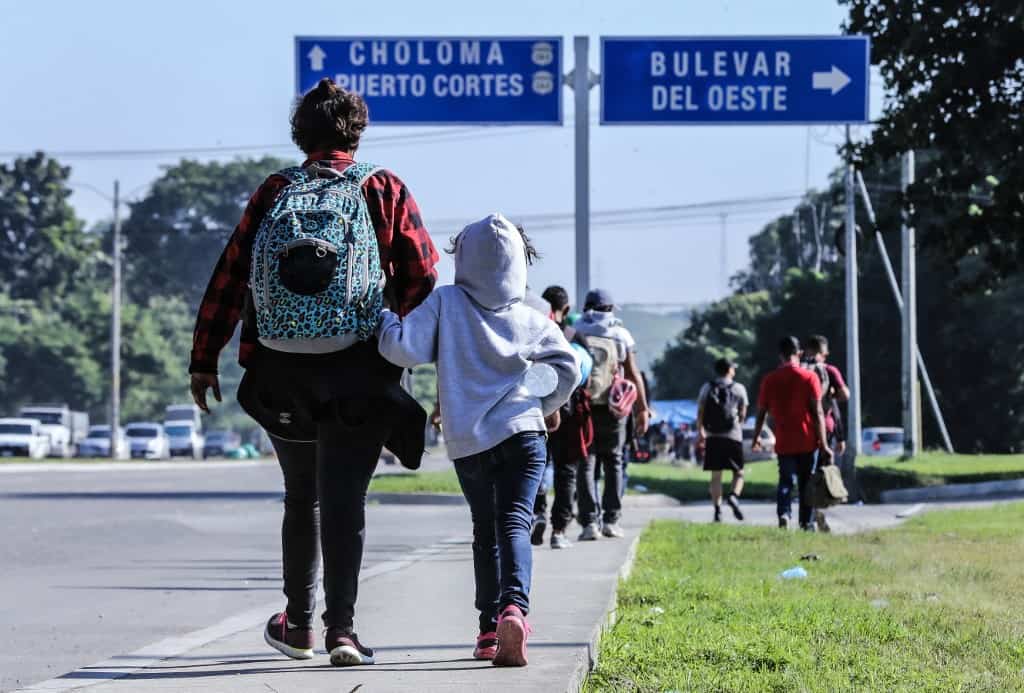The opening of U.S. immigration offices in Guatemala, Costa Rica and Colombia makes Central America more than ever a “waiting room” for migrants as they await visas.
Central America is a historic migratory corridor to the United States, a path for thousands of people in search of the American dream, and practically all of them do so without visas.
The “secure mobility” initiative announced this month by Washington was born out of the end of the Title 42 health rule, which allowed the blocking or expulsion of most migrants arriving at the U.S. border without the required documentation.
Visa applicants will have to make an appointment virtually on the website movilidadsegura.org, an initiative supported by the International Organization for Migration (IOM) and the United Nations High Commissioner for Refugees (UNHCR), two UN agencies.
The United States considers it a success. According to a State Department official, it opens “legal avenues and new rules” to prevent people from making the dangerous journey to “irregularly enter” U.S. territory.
Currently, the flow of migrants from South America, mostly from Venezuela and Ecuador, increased through the Darien, the lush jungle that separates Colombia and Panama full of dangers such as raging rivers, wild animals and criminal gangs.
“A record number of more than 100,000 people have been reached crossing the Darien (in 2023), six times more than those who arrived in the same period in 2022,” warned from the UN through a statement.
Outsourcing borders
Opening offices in other countries seeks, according to Washington, to make it easier for people contemplating migration to determine if they have a legal path to enter the United States and not have to put their lives in the hands of smugglers and attempt to enter illegally.
University of Costa Rica academic Carlos Sandoval said that this initiative responds to a strategy of “border externalization” to implement “more border controls before the physical border.”
“Mexico is the first border of the U.S. border. They have tried to put that in Guatemala as well, and now it is coming to the south,” says the migration expert.
Last March alone, more than 160,000 people tried to enter the United States from Mexico, according to the State Department. For Cuban sociologist Ricardo Puerta, the U.S. intention is that the U.S.-Mexico border will be a filter only for Mexicans.
Those who have “possibilities will allow themselves to be classified” in this new system, those who do not “will continue to play with the coyotes through the blind spots”, said Puerta.
Migratory crossroads
Sandoval explains that three migratory flows converge in Central America on their way to the United States: Central Americans themselves; people from other parts of the world who are stranded; and those coming from South America, mainly from Venezuela.
“Central America has been and will continue to be a waiting room, but also a place of expulsion and a place of arrival of people,” says the academic.
Guatemala, Costa Rica and Colombia will be the “strategic” countries to “contain these migratory flows”, says Gabriela Oviedo, coordinator of “Human Mobility” of the NGO Center for Justice and International Law (Cejil).
She maintains that Colombia is “the exit door” from South America, Costa Rica the first stop for those who crossed the Darien and Panama, and Guatemala, the first step to Mexico.
The U.S. says it is working with countries in the region to ensure they are able to manage their borders “humanely.”
In passing
The United States proposes that migrants wait for processing in the country where they are, although there is no guarantee of a visa.
The three countries will have to “assist refugees and vulnerable migrants,” “get them the help they need through humanitarian assistance,” provide them with “legal status in the countries where they are” and “accurate information about opportunities for legal pathways to other countries, including the United States,” according to a State Department official.
But in the historic center of Guatemala City, Diego Berrios, a 23-year-old Venezuelan, asks for money to continue his journey north despite the start of the migration program.
He arrived in Guatemala five days ago and hopes to reach the U.S.-Mexico border with his wife and daughters, aged one and eight, as soon as possible.
“Here in Guatemala he is only passing through,” he said. Cejil views “with concern the selected countries” and their capacity “to receive these people and provide them with lasting solutions beyond simple humanitarian assistance”.
Oviedo warns that “there is still no clarity” on how “these centers will operate and what the procedures will be”. “We don’t know how long they are going to take, what is going to happen to people who are denied these regular permits. There is a lot of uncertainty,” he laments.






